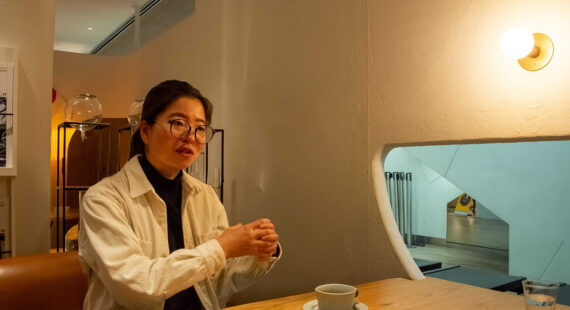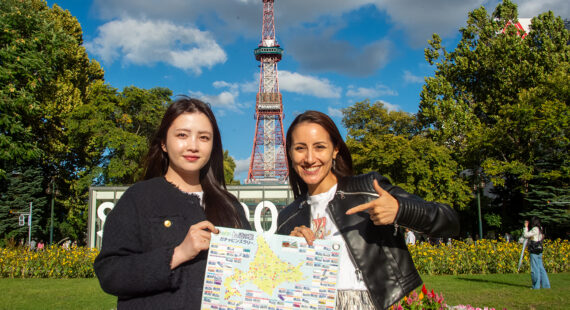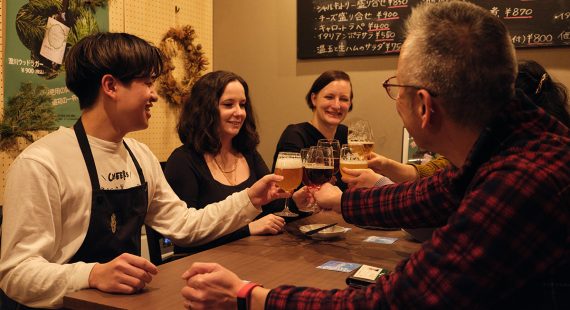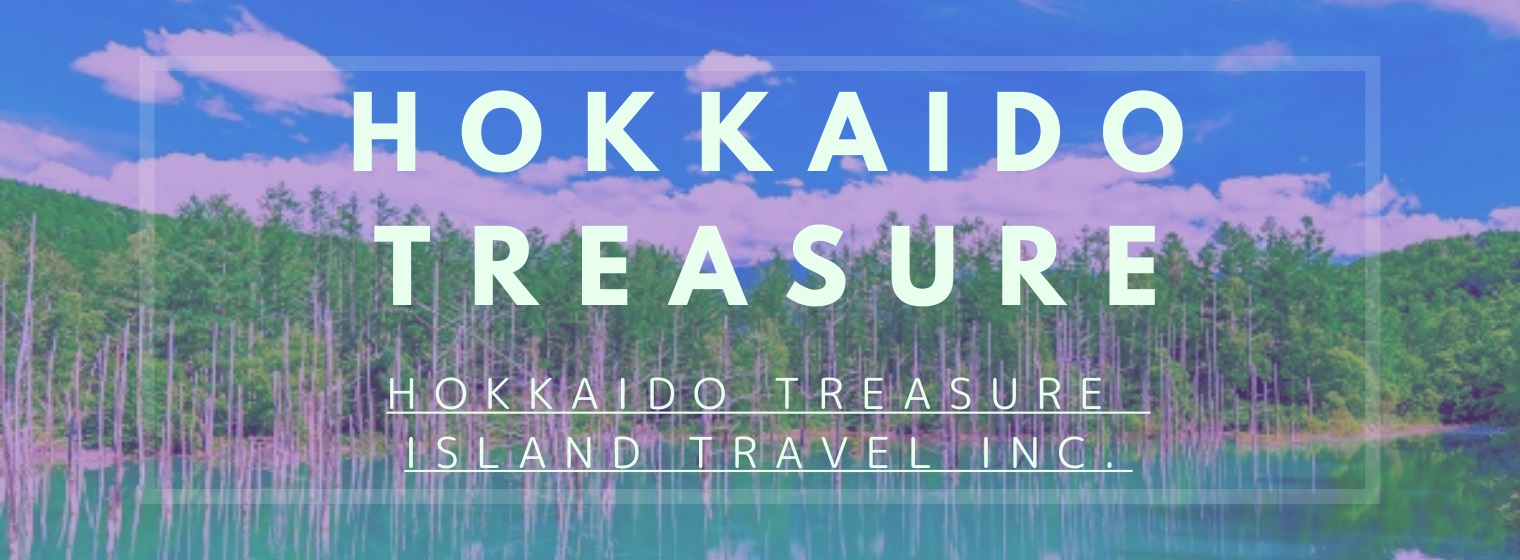Asahikawa City is located in central Hokkaido, Japan. It’s the second largest city on the island after the capital Sapporo. Asahikawa is known for its high-quality lumber, wood products, and woodworking, especially wooden furniture and architectural solutions. The well-known lumber of the area comes from the thick forest surrounding the city. Some of the forests are now protected and are part of the Daisetsuzan National Park. The national park, the Daisetsusan mountain range, and the wonderfully scenic spots of the national park are indeed another thing Asahikawa is famous for. The amazing Daisetsusan mountain range also lines the neighboring towns of Kamikawa and Higashikawa, so this blog post touches also those towns The Daisetsuzan National Park is the largest national park in Japan and also home to the highest mountain in Hokkaido, the Asahidake Peak, and the largest river in Hokkaido, the Ishikari River.
In this blog post, you can read all about Asahikawa. In addition to basic information about the city, you can learn what kind of fun activities are available in the city, the indigenous Ainu people’s culture, and the wonderful nature surrounding the city.
If you want to know more about Daisetsuzan National Park, take a look at our previous blog post on the topic, that is, Daisetsuzan National Park: The Playground of the Gods.
Table of Contents:
1. The Asahikawa City in brief
2. The Asahikawa City touring highlights
3. Eat and drink in Asahikawa
4. Ainu culture in Asahikawa
5. The scenic spots in Asahikawa and its vicinity
6. 10 reasons to visit Asahikawa
The Asahikawa City in brief
The Asahikawa City (Asahikawa-shi/旭川市) is strategically located at the center of Hokkaido, in the Kamikawa Basin in the Kamikawa sub-prefecture. The Japanese settlers founded it as the Asahikawa village in 1890 and since then it has grown into a busy city. The population of Asahikawa is about 321,000 people, which makes it the second-largest city in Hokkaido. The total area of the city is 747.66 square kilometers (288.67 square miles).
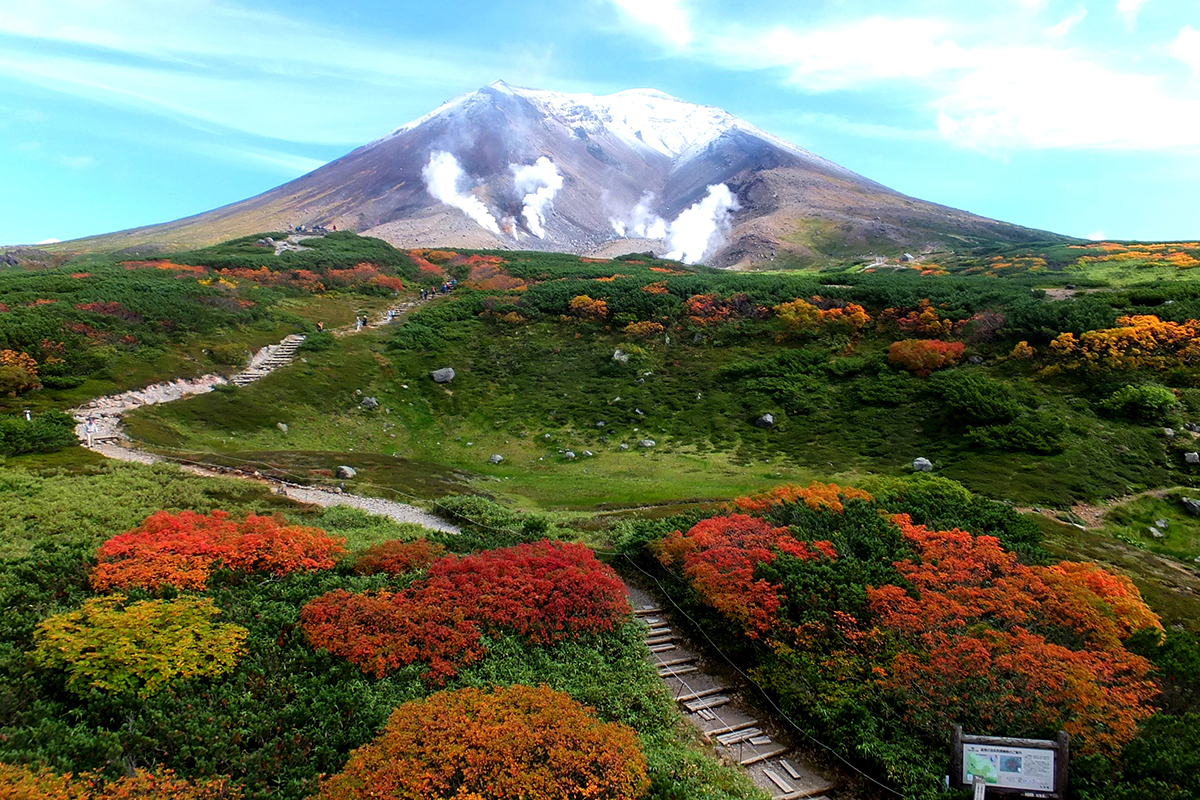
Encircled by towering mountains such as the Daisetsuzan mountain range, Asahikawa is an ideal base for travelers seeking to explore Hokkaido’s rugged terrains. The picturesque Ishikari River—the largest river in Hokkaido—flows through the city and adds to Asahikawa’s allure with its captivating presence. The river’s source is in the depths of the massive Daisetsuzan mountain range that divides the island of Hokkaido into western and eastern parts. A major part of the mountain range is dedicated to the Daisetsusan National Park, and Asahikawa is the gateway to the national park.
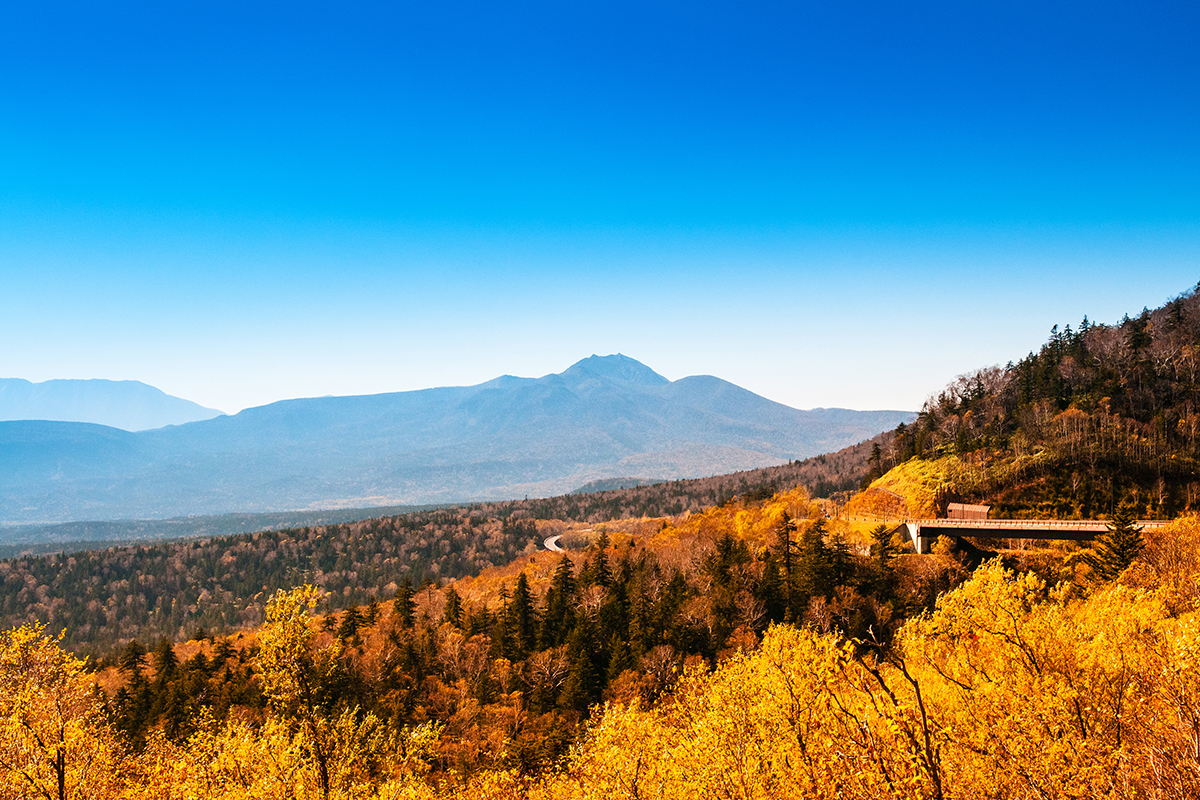
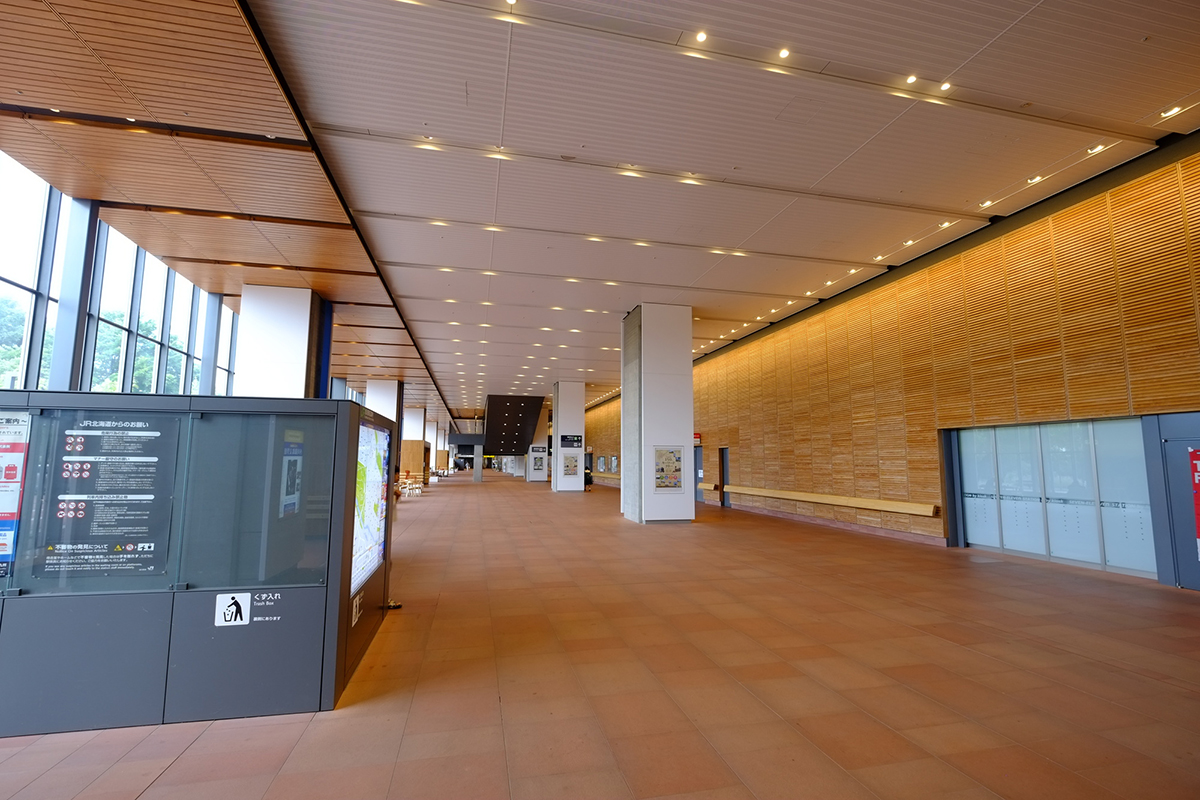
The foot and the lower slopes of the Daisetsuzan mountain range are covered with woods. The abundant lumber has turned into one of Asahikawa’s biggest industries: forestry and woodworking. The city is famous for its beautiful wooden furniture and innovative wooden architecture. Asahikawa hosts the International Furniture Design Competition Asahikawa (IFDA) (an outbound link) which brings together the best furniture designers every three years, next time in 2024. Asahikawa’s suburb town Higashikawa also has many lumber and building companies specializing in wooden buildings, such as innovative lumber processing company Time & Style Factory (an outbound link) and furniture specialist Takumikogei (an outbound link). Asahikawa Design Center (an outbound link) is an especially good place to familiarize yourself with Asahikawa’s wooden design. You can see some of the Asahikawa representative wooden architecture at the Asahikawa railway station, too.
Asahikawa is easy to access thanks to its central location. There is an extensive railway network leading in and out of the city and the same goes for highways. It takes about 2 hours from Sapporo, the main hub of Hokkaido, to drive to Asahikawa by car and about one and a half hours by train. The railways also connect Asahikawa to Wakkanai in the north, Abashiri in the east, and Furano and Biei in the south. In addition, there is an airport in the city with several daily flights to and from Tokyo and twice a week even to Taipei. If you are coming from Tokyo to Hokkaido by plane and want to visit Asahikawa, consider flying directly to Asahikawa airport to save some time.
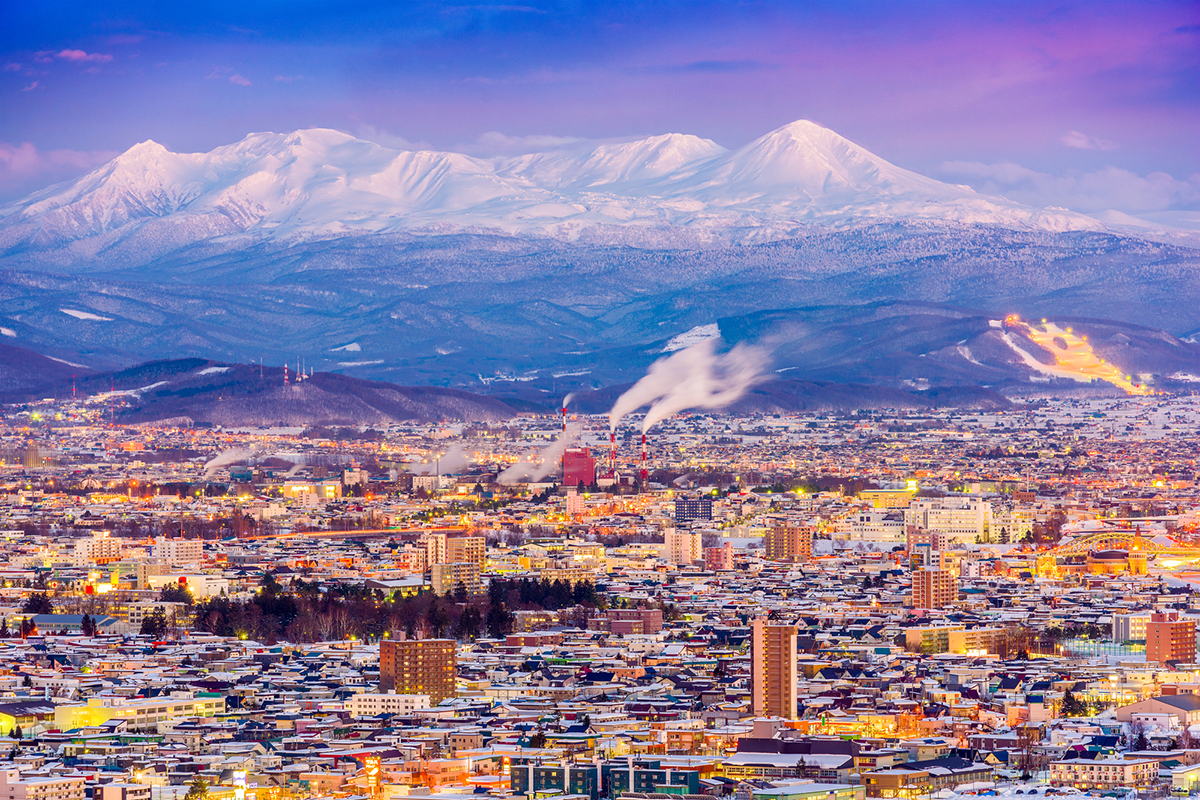
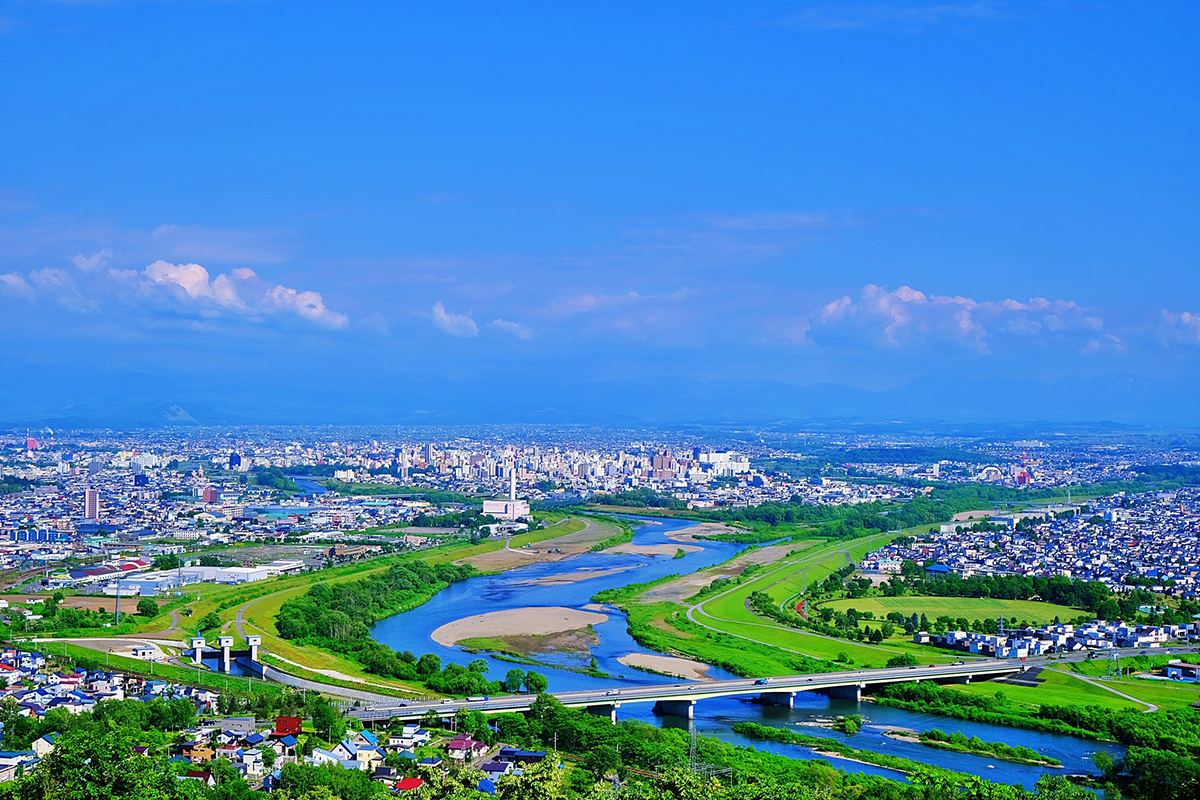
The city’s climate can be characterized as predominantly continental, featuring chilly winters and ample snowfall juxtaposed with warm and pleasant summers. Winter visitors can revel in a winter wonderland (with a yearly snowfall of a whooping 7.6 m/25 ft.) while summer tourists are treated to lush panoramas adorned with blossoming flora. In the winter, you can expect day temperatures to be around –3.3°C (26.1°F) in January; at night, the temperature drops as low as –11.7°C (10.9°F). The record low temperature measured in Asahikawa is freezing −41.0 °C (−41.8 °F), which is also the lowest temperature ever measured in Japan! The summer temperatures are much, much milder: the average day temperature in July is +26.2°C (79.2°F) and the average at night is +16.4°C (61.5°F).
Asahikawa, like the whole island of Hokkaido, was once inhabited by the indigenous Ainu people alone before the Japanese settlers arrived. The name of the city—Asahikawa—is Japanese and it means in English ‘the river of the morning sun’ (asahi (旭) = morning sun; kawa (川) = river). The Japanese name is, however, a translation of an Ainu name connected to one of the tributaries of the Ishikari River: Cuppet. Cuppet means in English ‘the river of the Sun’ (cup = sun; pet = river), so you can see clearly where the Japanese name comes from. By the way, the Japanese call the Cuppet River the Chubetsu River.
The Asahikawa City touring highlights
Because Asahikawa is a huge city, you can expect to find all sorts of interesting and fun activities there. One of the most popular places to visit in Asahikawa is the Asahiyama Zoo (Asahiyama dobutsuen/旭山動物園, an outbound link). The zoo is the most northern zoo in Japan and you can see many cold climate species there. The zoo animals are housed in habitats that are as close as possible to their natural habitats. In addition to a polar bear, Amur tiger, hippopotamus, and children’s favorite penguins, you can observe many animals native to Hokkaido, such as Ezo flying squirrels, harbor seals, brown bears, Ezo shika deer, and owls. You can get to the zoo from the Asahikawa station by bus in 40 minutes (500 yen) or by a private car in 20 minutes.
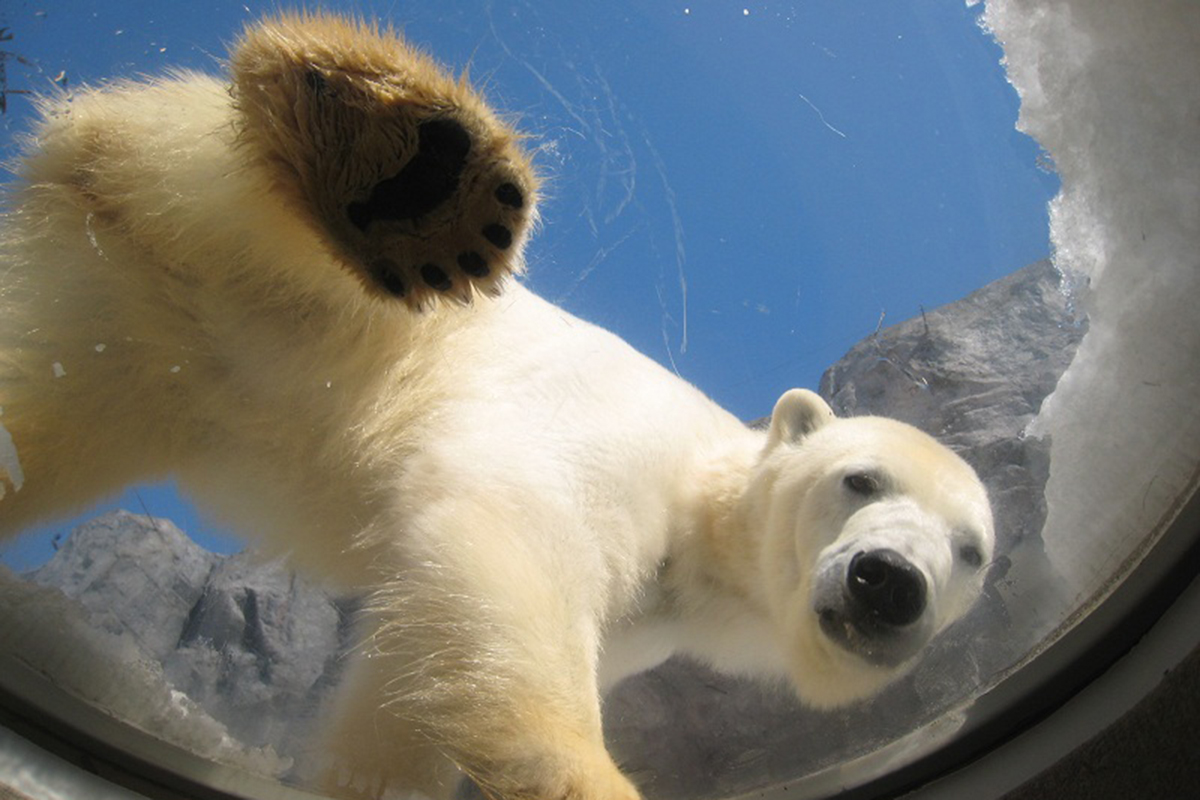

Asahikawa gets its fair share of the yearly snowfall of Hokkaido and many winter and snow festivals are held in Asahikawa and its vicinity. The Asahikawa Winter Festival (Asahikawa Fuyu Matsuri/旭川冬まつり) is the second largest snow festival in Hokkaido after the Sapporo Snow Festival, held about the same time as the Sapporo Snow Festival in early February. The Asahikawa Winter Festival boasts a giant snow sculpture with a different theme every year and an international ice sculpture contest. In addition, there are numerous smaller snow sculptures and other fun activities, including snowmobile rides, horse-drawn sleigh rides, snow slides, and an ice bar to relax at.
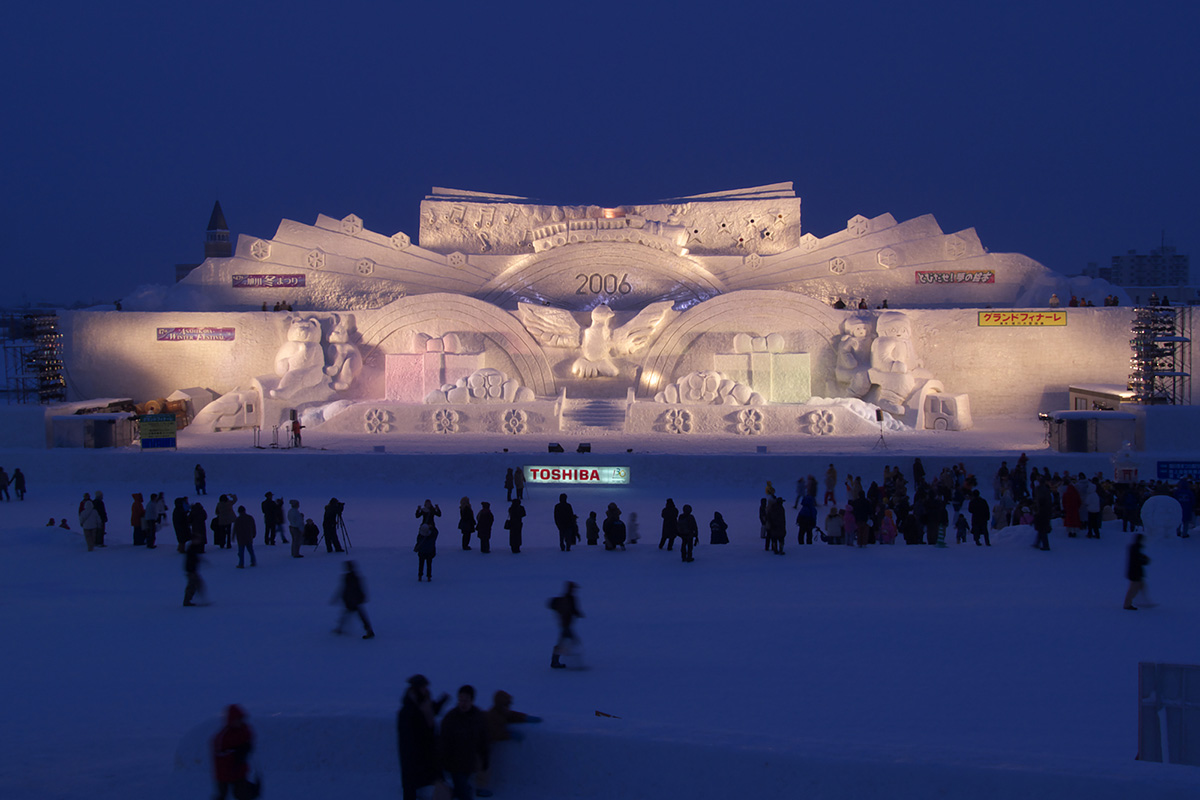

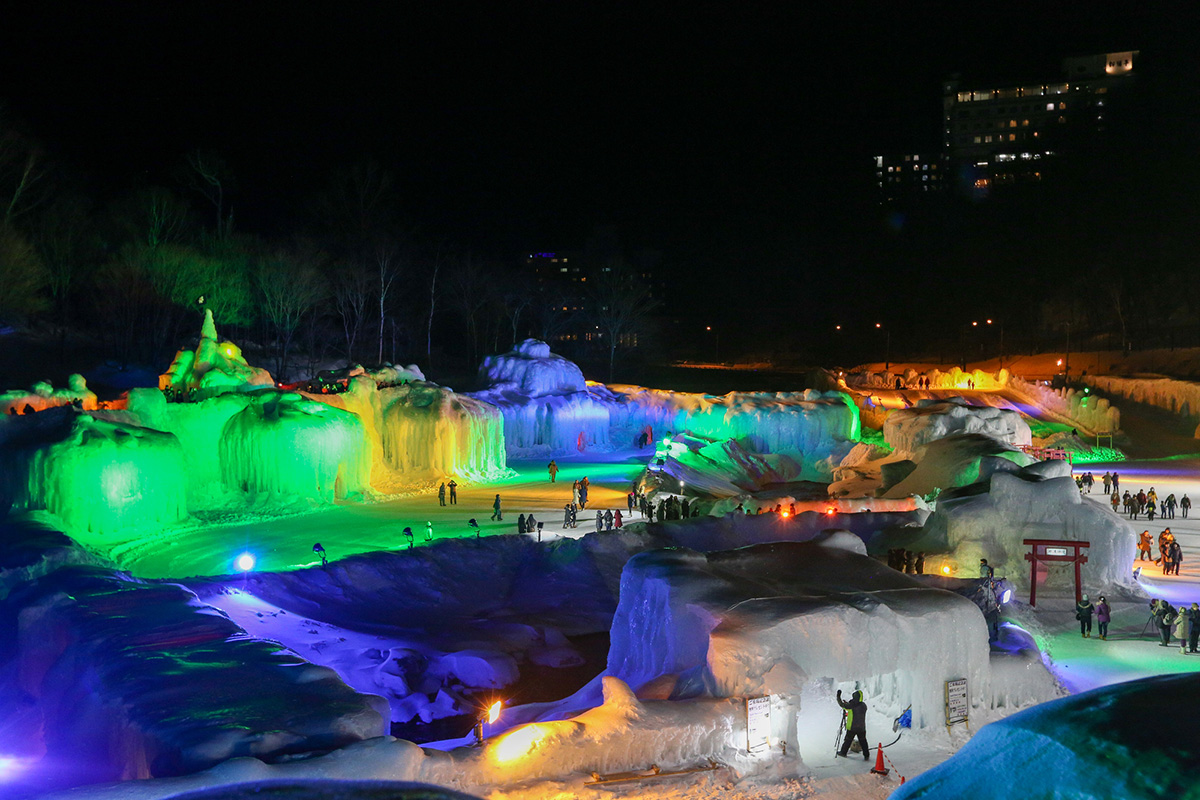
Another unforgettable experience is the Sounkyo Icefall Festival (an outbound link, in Japanese only) (Sounkyo Hyobaku Matsuri/層雲峡氷瀑まつり) in Kamikawa town east of Asahikawa. The event is held near the Sounkyo Onsen hot spring town from late January to mid-March. The main attractions are simply buildings and statues made of snow and ice with light-up with the colors of a rainbow during the night. There is a tunnel made of ice to explore, Hyobaku Shrine made of ice, an ice climbing experience (during the weekends only), and fireworks during the night on the weekends. The water used to create all these beauties is taken from the Ishikari River flowing through the Sounkyo Gorge. You need to remember to wear extra warm clothes when visiting this festival because the temperature in the mountains can be much lower than in the city and proper winter shoes. After all, the frozen ground can be very slippery.
If you visit Asahikawa in the summer but still want to experience the coldness of winter, you can do so at the Hokkaido Ice Pavilion (an outbound link, in Japanese only) (Hokkaido Aisu Pabirion/北海道アイスパビリオン) in Kamikawa. The facilities at the Ice Pavilion include an ice tunnel with a temperature of -20°C (-4°F), a wall of icicles, a corner of extreme coldness (-41°C/-41.8°F!!), a snowslide, and—for some unexplainable reason—an art museum of toilets, which can actually be used. The Ice Pavilion is open all year round, so you can feel the freezing cold of Hokkaido winter anytime.
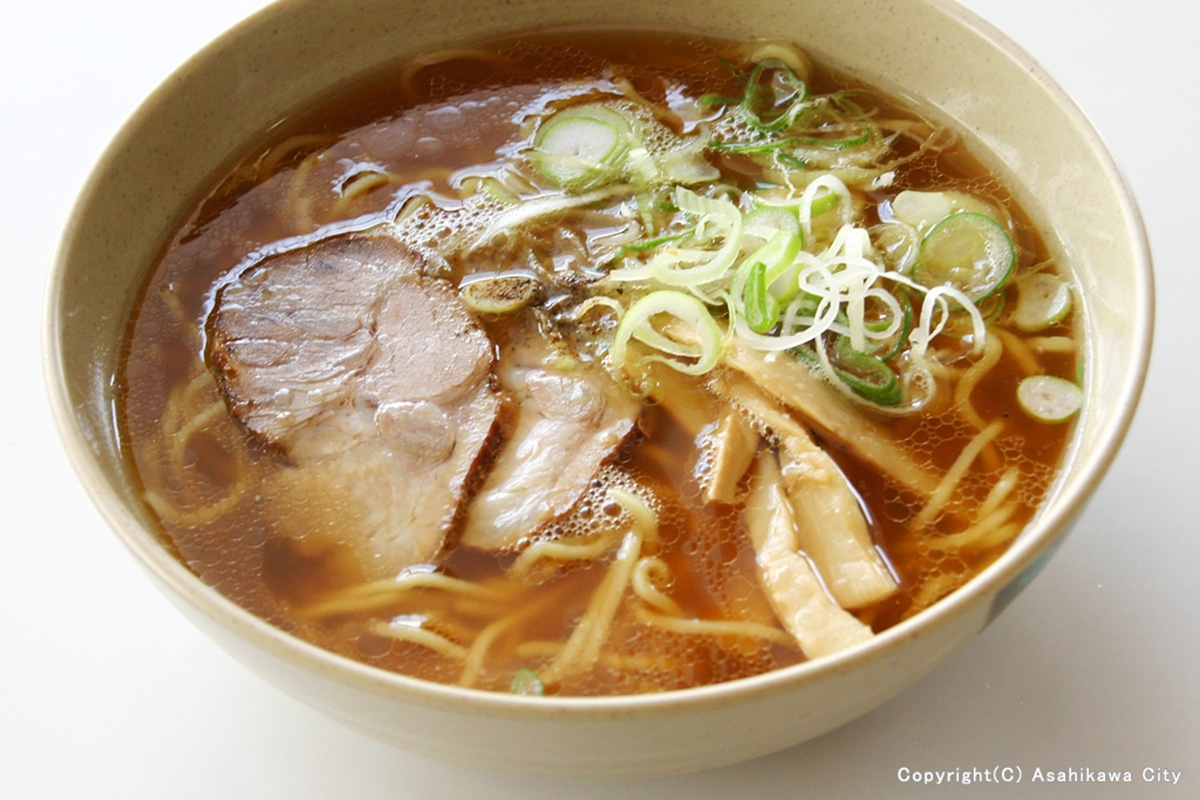
Eat and drink in Asahikawa
When thinking about Asahikawa and food, the first thing that comes to mind is the Asahikawa ramen. The ramen noodles are enjoyed all over Japan and all over the world but Hokkaido has three especially famous ramen: Asahikawa shoyu ramen (soy sauce-based broth), Sapporo miso ramen (miso-based broth), and Hakodate shio ramen (salt-based broth) (but don’t forget the bubbling under Muroran curry ramen). So when in Asahikawa, be sure to slurp some delicious ramen! The best place to do so is probably at Asahikawa Ramen Village (an outbound link), in which eight of the most famous Asahikawa ramen shops have opened their branch stores. The location of the ramen village is a bit far away (about 5 km/ miles) from the Asahikawa station and it’s difficult to get there by public transportation, so it’s better to go by private car. We can arrange a visit to Asahikawa Ramen Village for you as a part of your Asahikawa tour. Just let us know when you contact us about your itinerary.
Asahikawa is also known for its sake brewing industry, which uses the abundant spring water from the Daisetsuzan mountains. The sake breweries in Asahikawa offer a wide range of specialties that showcase the diversity in taste and brewing techniques. These specialties can be attributed to the use of different rice varieties, sake yeast strains, and brewing methods employed by each brewery. Some breweries in Asahikawa are known for their low-temperature fermentation techniques, which result in a smooth and delicate flavor profile reminiscent of grape wines produced using similar methods. Other breweries focus on preserving traditional brewing methods, resulting in bold and robust flavors that reflect the rich cultural heritage of the region.
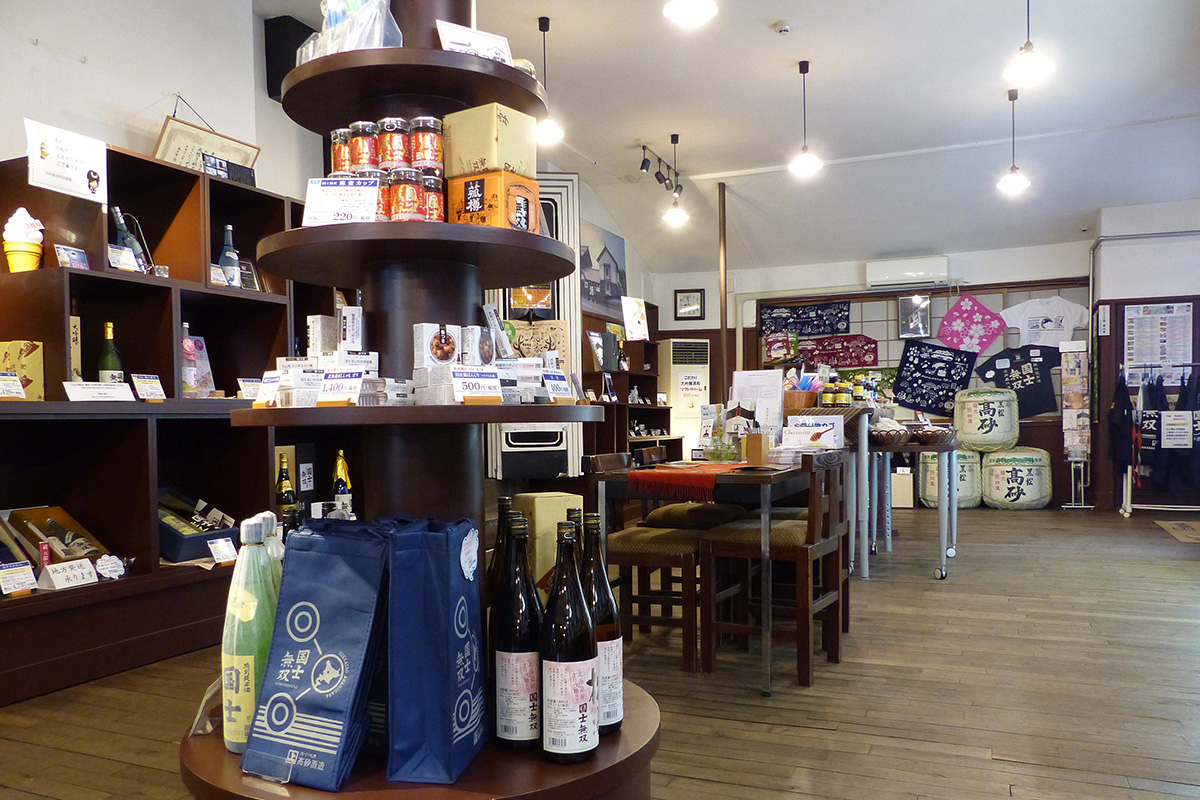

Otokoyama Sake Brewery (男山) (an outbound link), one of the most famous breweries in Asahikawa, offers visitors a taste of elegance with its premium sake varieties and has a wide assortment of about 40 products to choose from. Takasago Sake Brewery (Takasago shuzo/高砂酒造) (an outbound link, in Japanese only) is a unique blend of tradition and innovation. With a deep appreciation for their cultural heritage, they strive to create sake that showcases the essence of Asahikawa while incorporating modern techniques to enhance the flavor and experience. Takasago Sake Brewery’s flagship product is called Kokushi Muso (国士無双). Godo Shusei Asahikawa Plant (合同酒精 旭川工場) (an outbound link, in Japanese only) takes great pride in brewing sake for the local community and has named its flagship product, Taisetsu no Kura (大雪乃蔵), after the great mountain range of Daisetsuzan.
Ainu culture in Asahikawa
The Indigenous Ainu people have lived for hundreds of years in the area known today as Asahikawa. Ainu communities used to build their villages (kotan in Ainu) by rivers because salmon running up the rivers every fall is the staple food for Ainu. Also, the whole of Hokkaido was covered in thick woods before the settlers cut the trees down, so rivers were used to move from one place to another instead of roads. There are several villages along the great Ishikari River and the most famous of them in the current Asahikawa area is called Cikapuni in Ainu (Chikabumi/近文 in Japanese). The name means ’the place in which the bird always is’. This kotan and its inhabitants were forced to move several times when Asahikawa city was developing rapidly and reached the edge of the village.
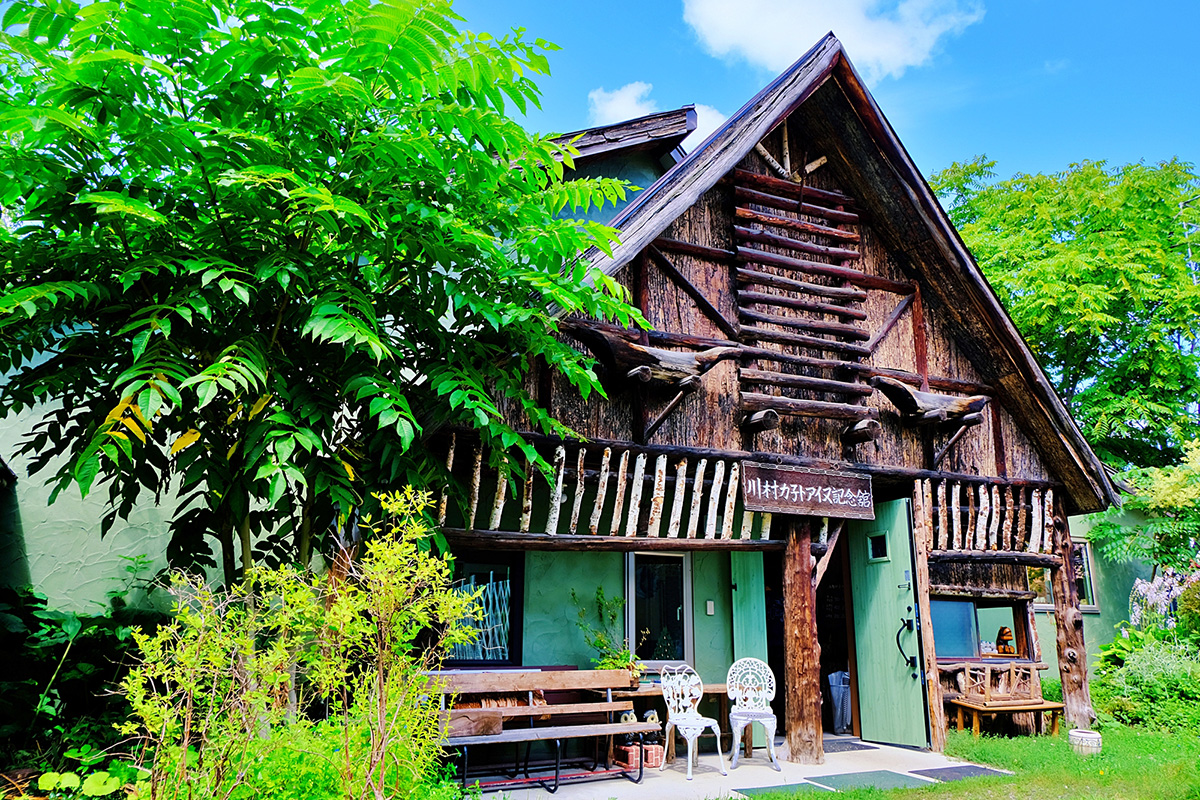
One reminder of the original location of the Cikapuni is Kawamura Kaneto Ainu Memorial Museum (Kawamura Kanato Ainu Kinenkan/川村カ子トアイヌ記念館) (an outbound link, in Japanese only). The museum is located next to the Hokkaido University of Education Asahikawa campus, among residential houses. This kind of strange location is explained by the fact that the city grew around the Cikapuni village and finally swallowed it except for the plot where the museum is built. The museum was opened in 1916, which makes it the oldest Ainu museum in Hokkaido. At the time, Japanese tourists interested in Ainu started to come to Asahikawa in masses after an army base was opened in the city.
In the Ainu language, the name of the museum is Itemuka (‘repose’), reflecting the hopes of its founder Kawamura Kaneto (川村カ子ト 1893–1977) to make it a place to relax and especially a fortress for urban Ainu people to preserve and celebrate the culture of their ancestors. In many cases, it is difficult for indigenous peoples to keep on practicing their culture in urban environments and Ainu are not an exception to this. In 2019, the name of the museum was changed to Kawamura Kaneto Ainu Memorial Museum, named after the influential Ainu chieftain and founder of the museum Kawamura Kaneto. The museum was completely refurbished and the new two-storey museum building was opened in the summer of 2023.
The museum itself hosts an exhibition of traditional Ainu tools, clothing, and everyday items. There are also cultural workshops, such as Ainu handicrafts from embroidery to wood carving, and dance classes. At the museum shop, visitors can buy the works produced by Ainu artisans as unique souvenirs.
Cikapuni kotan (Chikabumi) is a home to many well-known Ainu. Another famous person, who lived there, was Chiri Yukie (知里幸恵 1903–1922), an Ainu woman from Horobetsu (now called Noboribetsu). Chiri was the first Ainu to write down the oral legends of Ainu and to translate them into Japanese. Chiri was six years old when she was sent to live with her aunt Kannari Matsu in Cikapuni and she lived most of her short life there. She passed away from heart disease at the young age of 19.
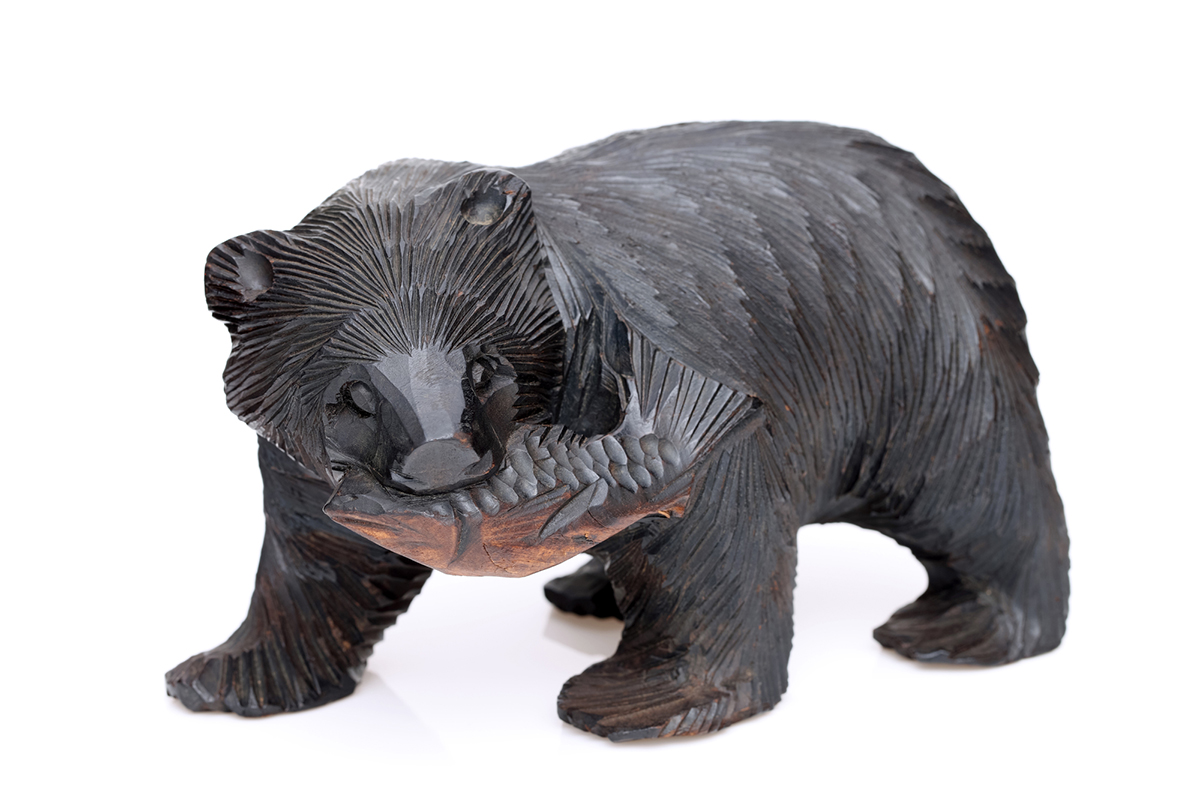
As mentioned earlier, Asahikawa is famous for its woodwork. One of the traditional jobs of Ainu men is wood carving, and they excel at, for example, decorative plates and sheaths and handles of knives. An innovative addition to the most traditional crafts was made in the early 20th century by Matsui Umetaro of Chikabumi. He was the first Ainu to carve wooden bear statues, which you can see all around Hokkaido today. Another influential Ainu artist was Sunazawa Bikki (1931–1989), also born in Cikapuni. He applied traditional Ainu patterns and ways of thinking in his art, whether it was sculpture, woodcarving, or painting. His atelier Bikky Atelier 3 More (the number three in the name is read in Japanese: ‘san’) (an outbound link) is in Otoineppu, about a 2-hour drive from Asahikawa.
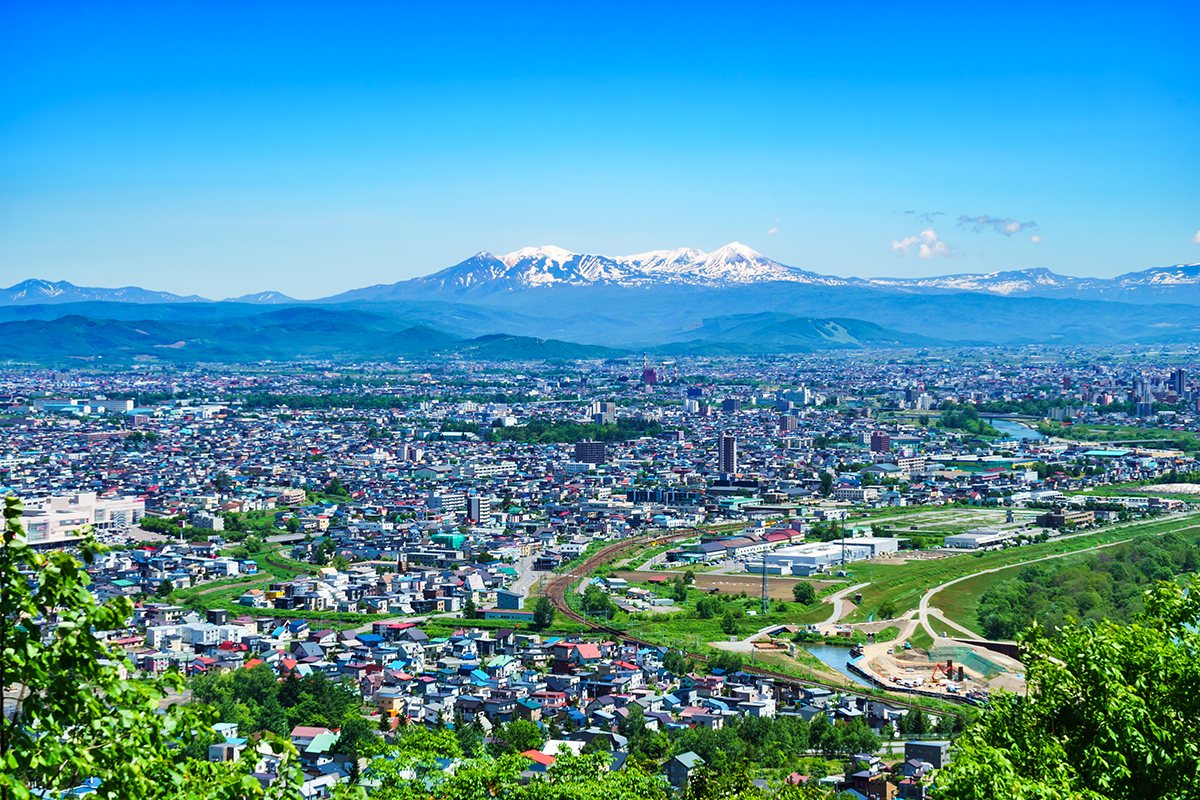
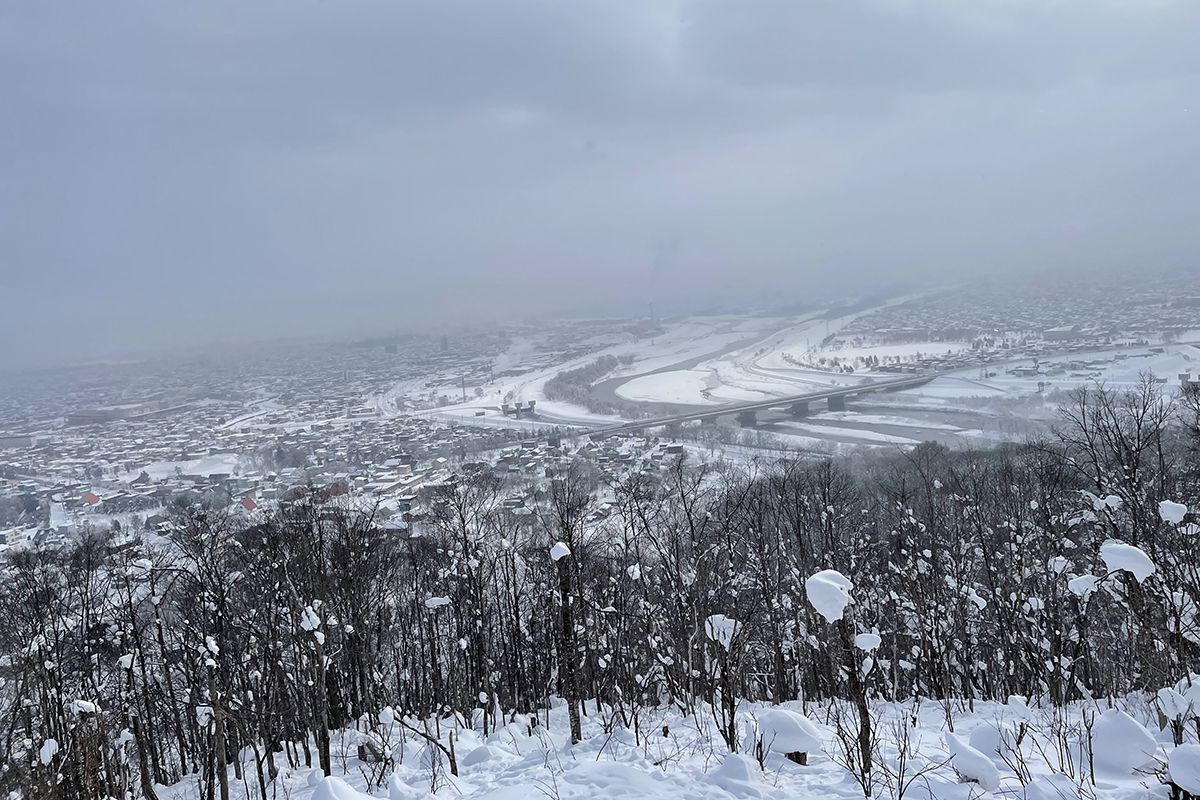
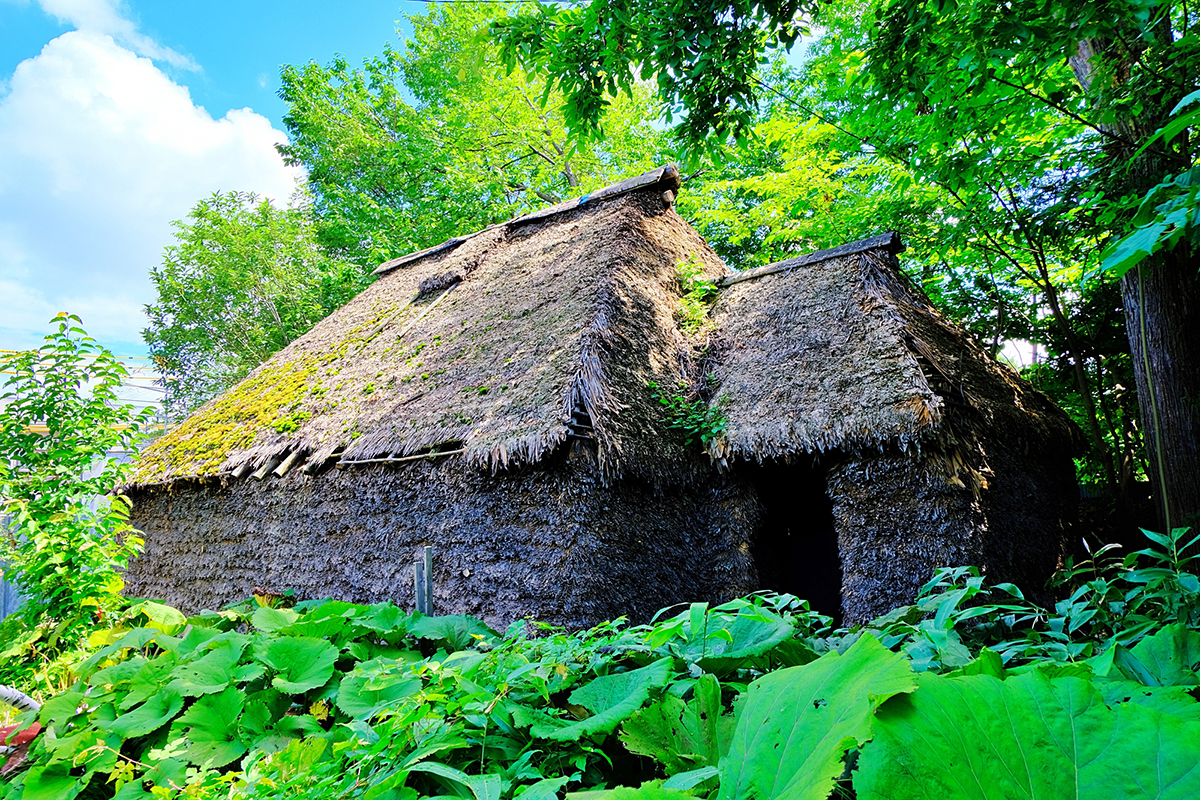
Living for centuries in the current Asahikawa area, Ainu became of course very familiar with the local nature and as the Ainu religion was shamanistic, many of the sites are important in the religious sense. For example, the mountain on the western side of Asahikawa city is today called Mt. Arashiyama but Ainu call it Cinomisir or ‘the mountain we pray to’. There is an observation deck on the mountain and the visitors can enjoy the beautiful scenery over the city there. At the foot of the mountain, you can find a group of traditional thatched Ainu houses called cise in Ainu. If you proceed about 10 kilometers downstream on the Ishikari River from Cinomisir/Arashiyama, you’ll reach the mysterious Kamuykotan. Read on to find out more about this scenic spot that is historically significant for Asahikawa Ainu.
If you want to learn more about the Ainu people of Hokkaido and their culture, we have many blog posts that you might find interesting. Take a look for example at Cherishing the Ainu Culture in Biratori Town, The Teshikaga Area: Sustainable Traveling and Ainu Culture, Hokkaido: Home to the Indigenous Ainu People and their Ancestors for over 10,000 Years and Shiraoi: The Town of the Ainu.
The scenic spots in Asahikawa and its vicinity
Asahikawa offers a plethora of stunning scenic spots for tourists to explore. One of the must-visit spots is Kamuykotan (カムイコタン), ‘The Village of the Gods’. Kamuykotan refers to a spot with rocks and boulders with unusual shapes at the middle reaches of both banks of the Ishikari River. The river rushes past these amazing rock formations in such a way that something supernatural must live there, hence the name Kamuykotan. Kamuy are spiritual beings that Ainu believed to occupy all the living beings and other things, too. Something being kamuy-like is not necessarily a positive thing only, because some of the kamuy are very strong and that’s why also scary. According to Ainu legends, a battle between a demon and a supernatural hero took place in Kamuy kotan, and the remains of the dead demon—that is the odd rock formations—still remind us of that great fight.
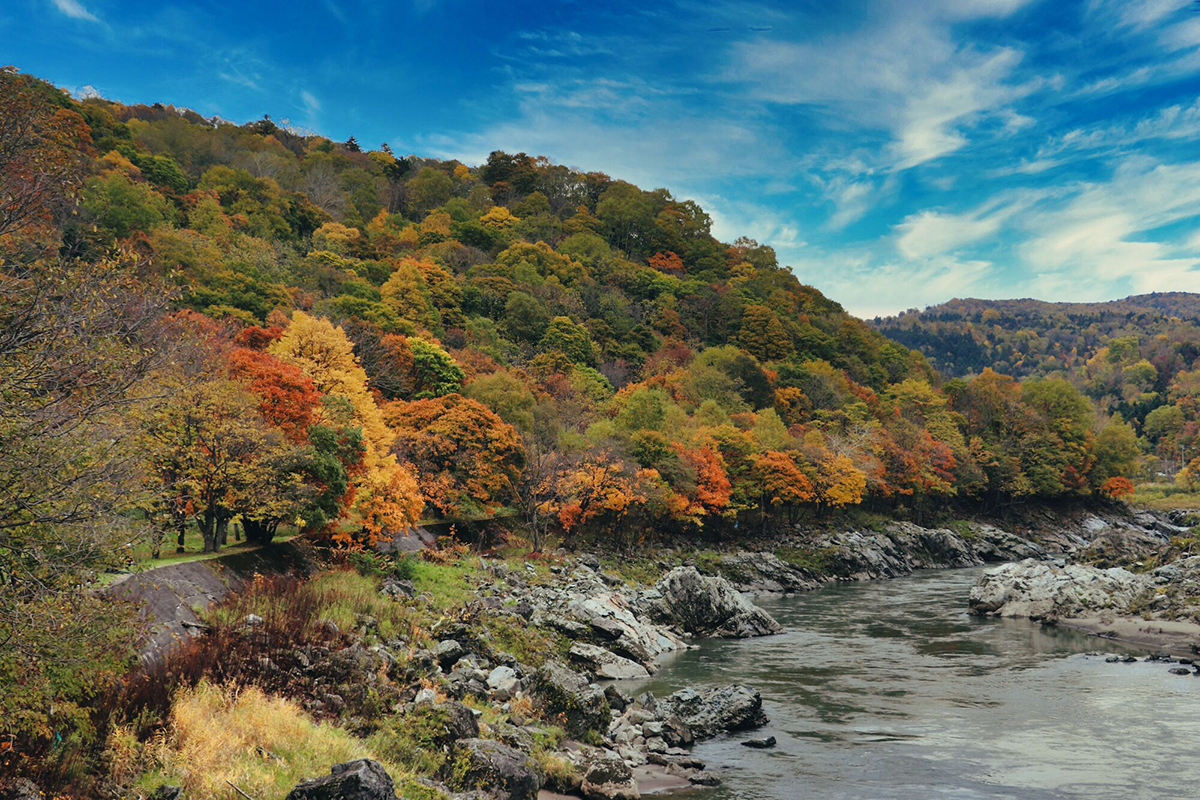
Another prominent scenic spot in Asahikawa is the vast Daisetsuzan National Park, known for its breathtaking mountain views and diverse flora and fauna. This expansive park is home to Mount Asahidake (旭岳) (2,291m/7,516ft), the tallest peak in Hokkaido, and offers numerous hiking trails for outdoor enthusiasts. One of the must-see places up there is the Sugatami Pond (Sugatami no Ike/姿見の池) which reflects the majestic Mt. Asahidake. For those seeking relaxation and rejuvenation, Sounkyo Hot Springs (層雲峡温泉) in Kamikawa is the perfect destination. Surrounded by majestic mountains, Sounkyo Hot Springs offers a picturesque setting for visitors to soak in natural hot springs and enjoy the tranquil atmosphere.
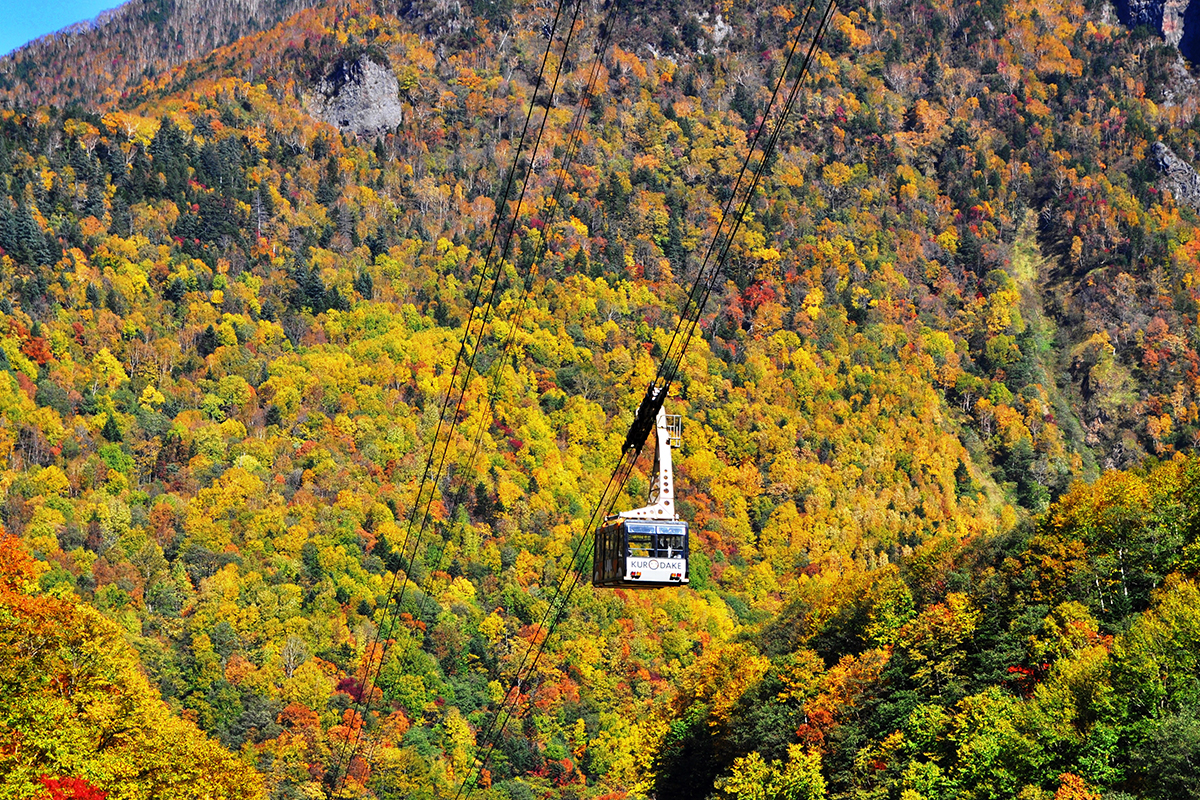
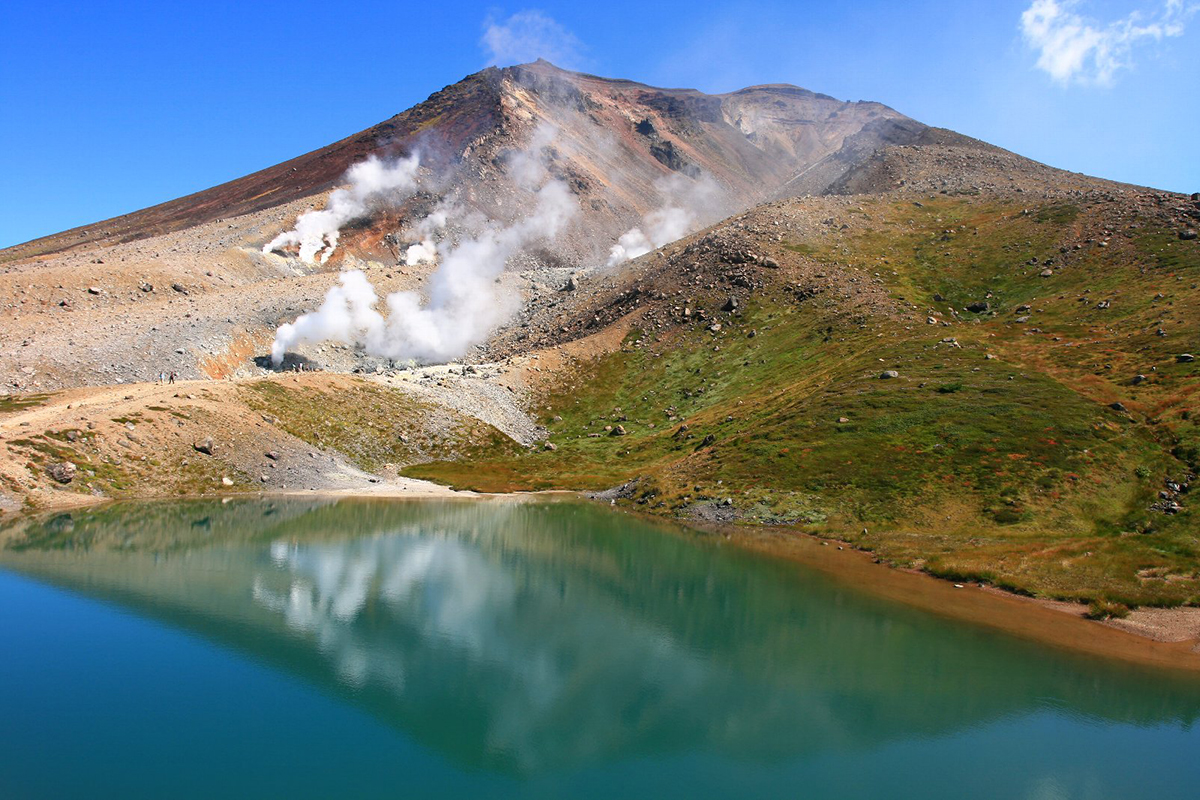
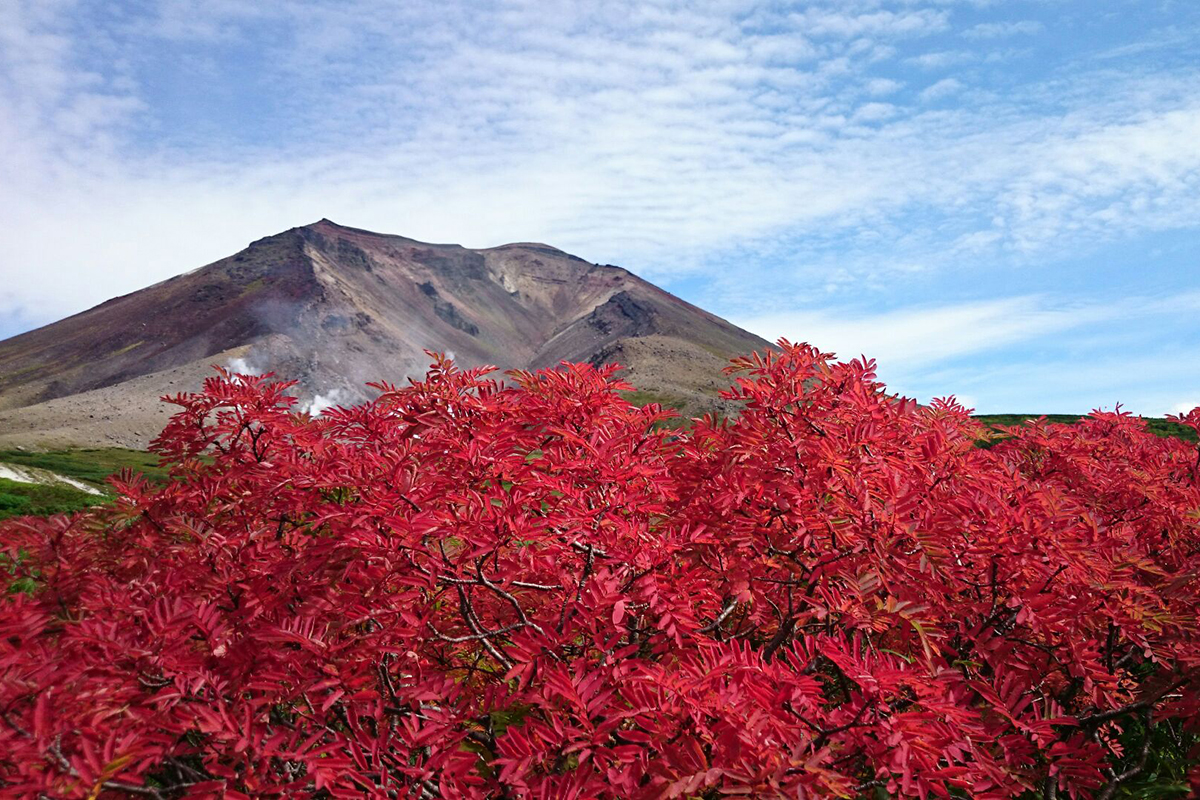
For nature lovers, Asahikawa and the towns close to it also boast several mesmerizing waterfalls. One of these is Meteor Falls (Ryusei no taki/流星の滝) in Sounkyou Gorge, known for its dramatic cascades and stunning rock formations. Milkyway Falls (Ginka no taki/銀河の滝), located next to Meteor Falls, is another impressive waterfall that captivates visitors with its ethereal beauty. The Obako (大函) and Kobako (小函) rock formations in Sounkyo Gorge are also worth seeing. The Tenninkyo Onsen (天人峡温泉) area in Higashikawa is also worth mentioning as it is home to two remarkable waterfalls. Hagoromo Falls (Hagoromo no taki/羽衣の滝), is known for its graceful 270-meter-long curtain-like cascade, and Shikishima Falls (Shikishima no taki/敷島の滝), which boasts a powerful flow of water. These waterfalls offer a picturesque setting for visitors to enjoy the beauty of nature.
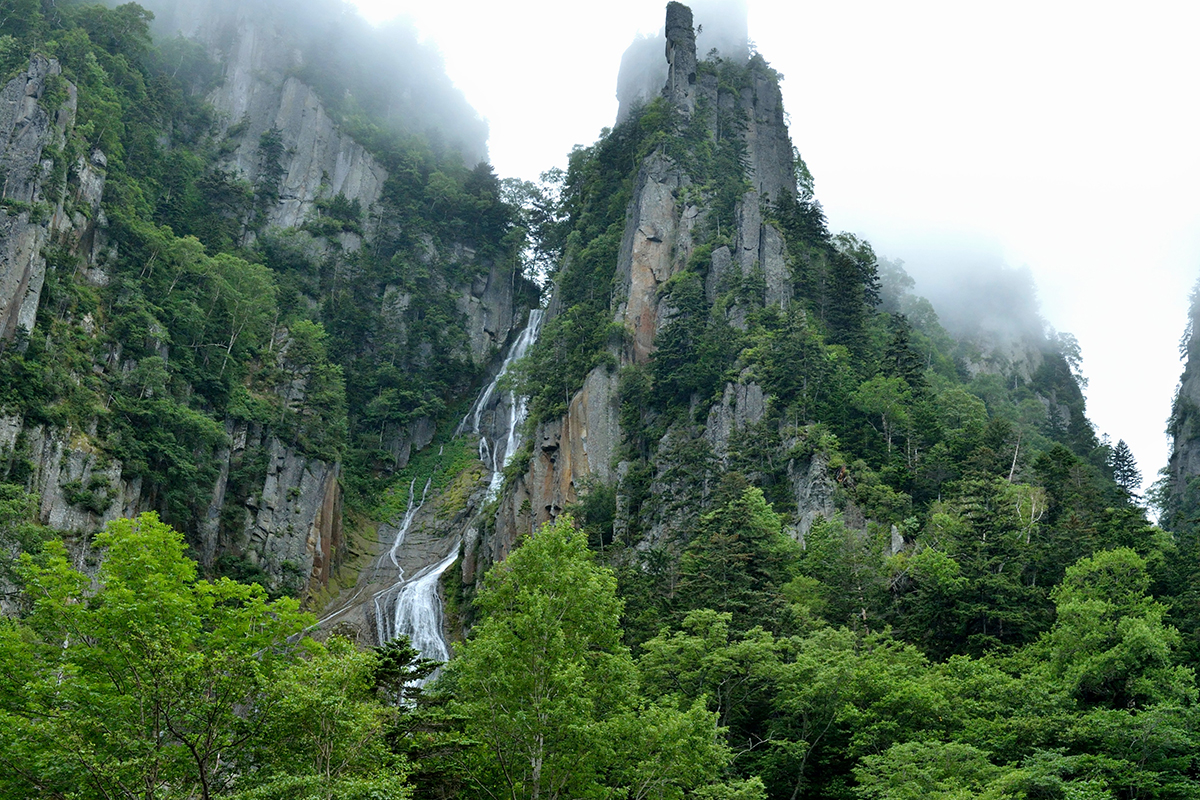
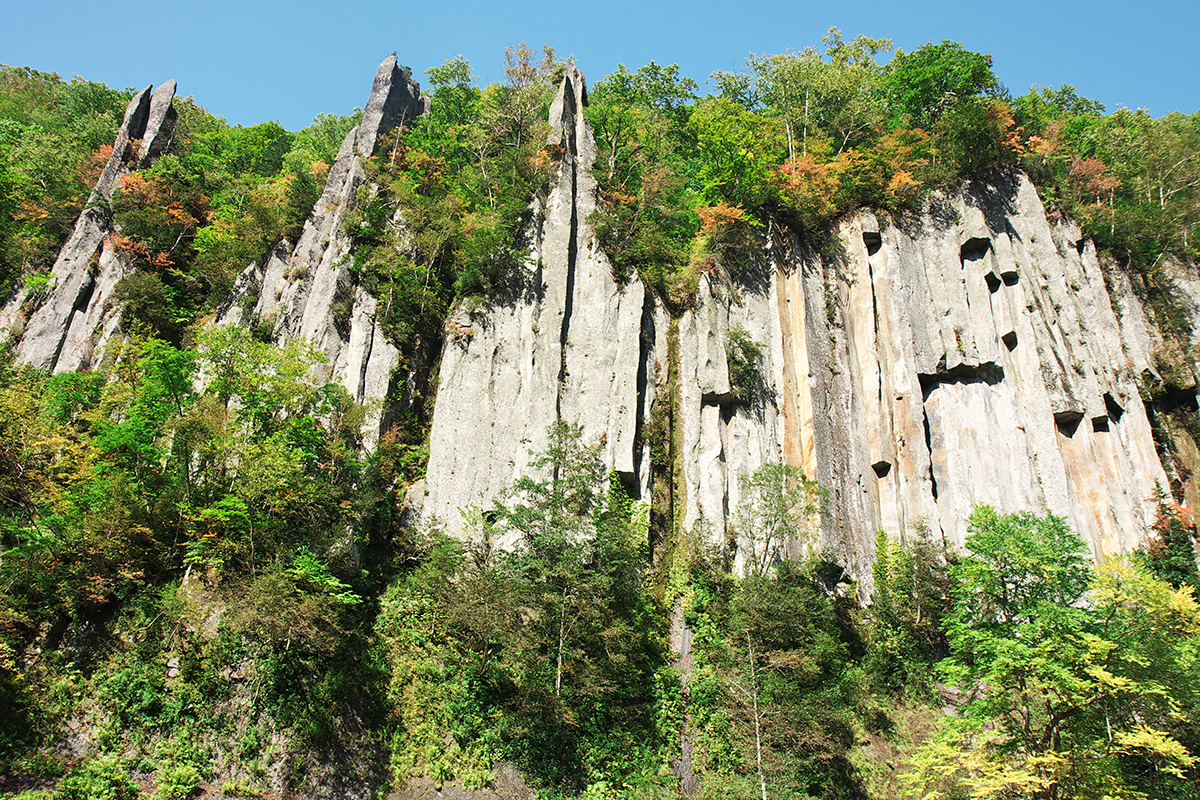
If you enjoy exploring picturesque gardens and landscapes, then Hokkaido Garden Path (Hokkaido Gaaden Gaido/北海道ガーデン街道) (an outbound link) and The Flower Road (Hanabito Kaido/花人街道) are must-visit destinations for you. These routes showcase the natural beauty and horticultural wonders of Hokkaido. With the Hokkaido Garden Path, you can embark on a 200-km journey connecting Asahikawa, Furano, and Tokachi, where you will encounter eight of Hokkaido’s most stunning and representative gardens. From the tranquil Daisetsu Forest Garden (大雪 森のガーデン) (an outbound link, pdf) to the charming Furano Flower Fields, each garden along the route offers its own distinct beauty, showcasing the carefully curated landscapes and blooming flowers that epitomize the horticultural traditions of Japan.
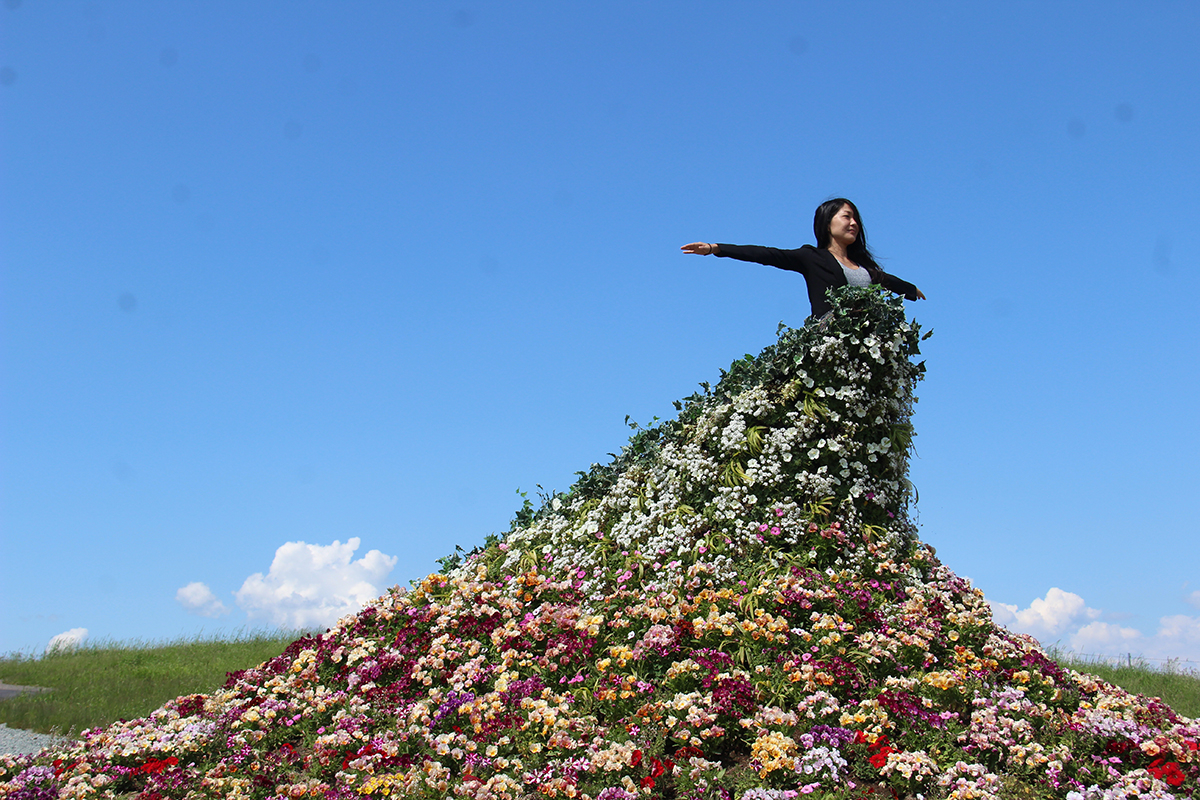

The Flower Road, on the other hand, takes you along Route 237, through eight cities, towns, and villages including Asahikawa City, Biei Town, Furano City, and Shimukappu Village. This scenic route, also known as the Flower Lover’s Road, is a collaborative effort among these communities to create a beautiful and harmonious landscape. Inspired by the tradition of strolling along riverside paths, the Hanabito Kaido features cherry blossom-lined roads and meticulously crafted gardens that invite visitors to immerse themselves in the enchanting beauty of Hokkaido’s countryside. The starting point of both the Hokkaido Garden Path and the Flower Road is Ueno Farm (上野ファーム) in Asahikawa, which boasts an English-style garden.
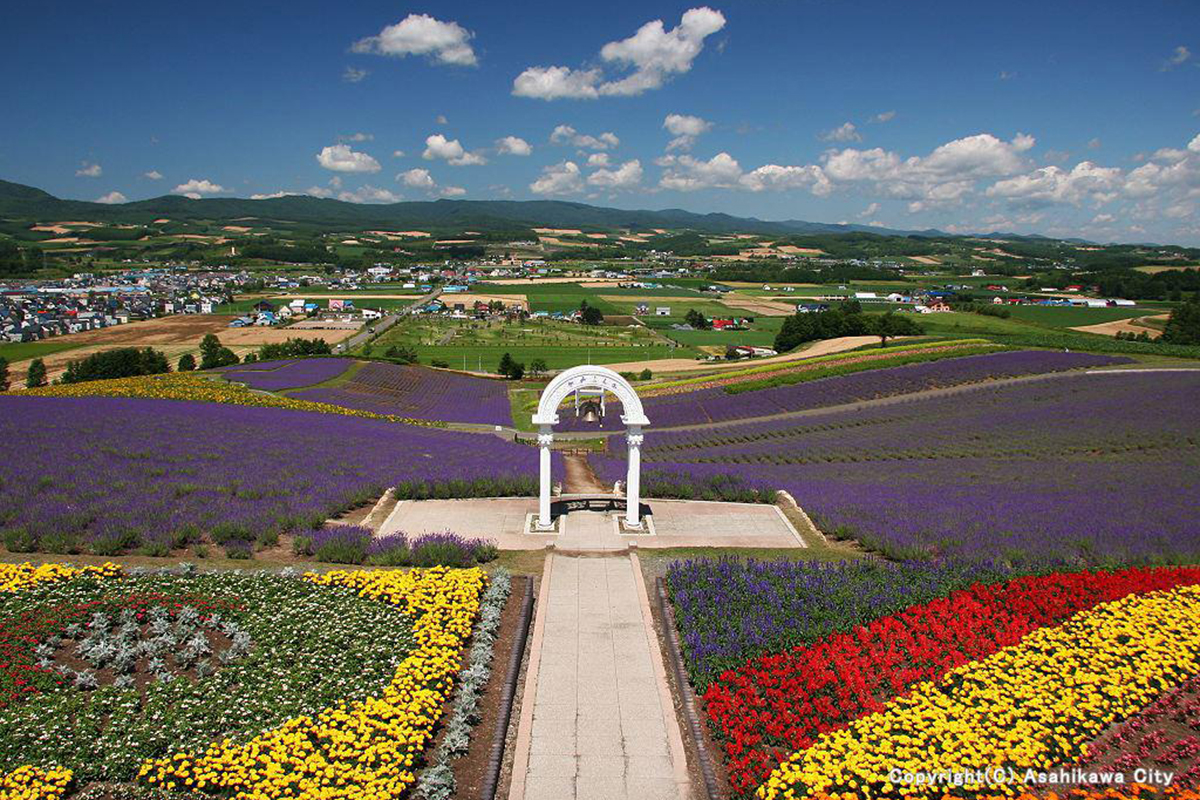
10 reasons to visit Asahikawa
If you are still wondering why you should definitely visit Asahikawa while in Hokkaido, here is a short recap for you about the best bits of Asahikawa:
① Visit the Asahiyama Zoo to meet its furry residents
② Admire the breath taking scenery of the Daisetsusan mountain range
③ Enjoy onsen hot springs at Tenninkyo Onsen in Higashikawa and Sounkyo Onsen in Kamikawa
④ Experience the center of wood art and woodwork in Hokkaido
⑤ Indulge in the vibrant ramen and sake brewing culture of Asahikawa
⑥ Experience extreme coldness in Hokkaido Ice Pavilion
⑦ Learn about the indigenous Ainu culture at Kawamura Kaneto Memorial Museum
⑧ Participate in fun winter festivals: Asahikawa Winter Festival and Sounkyo Icefall Festival
⑨ Visit traditional Ainu houses at Cinomisiri/Arashiyama
⑩ Immerse yourself in the wonderful flower fields by the Hokkaido Garden Path and the Flower Road
Remember that Asahikawa is easy to reach from anywhere in Hokkaido and Tokyo, too, so it’s a good place to plan your trip around: You can spend your whole vacation in Asahikawa or make shorter trips to other destinations in Hokkaido.
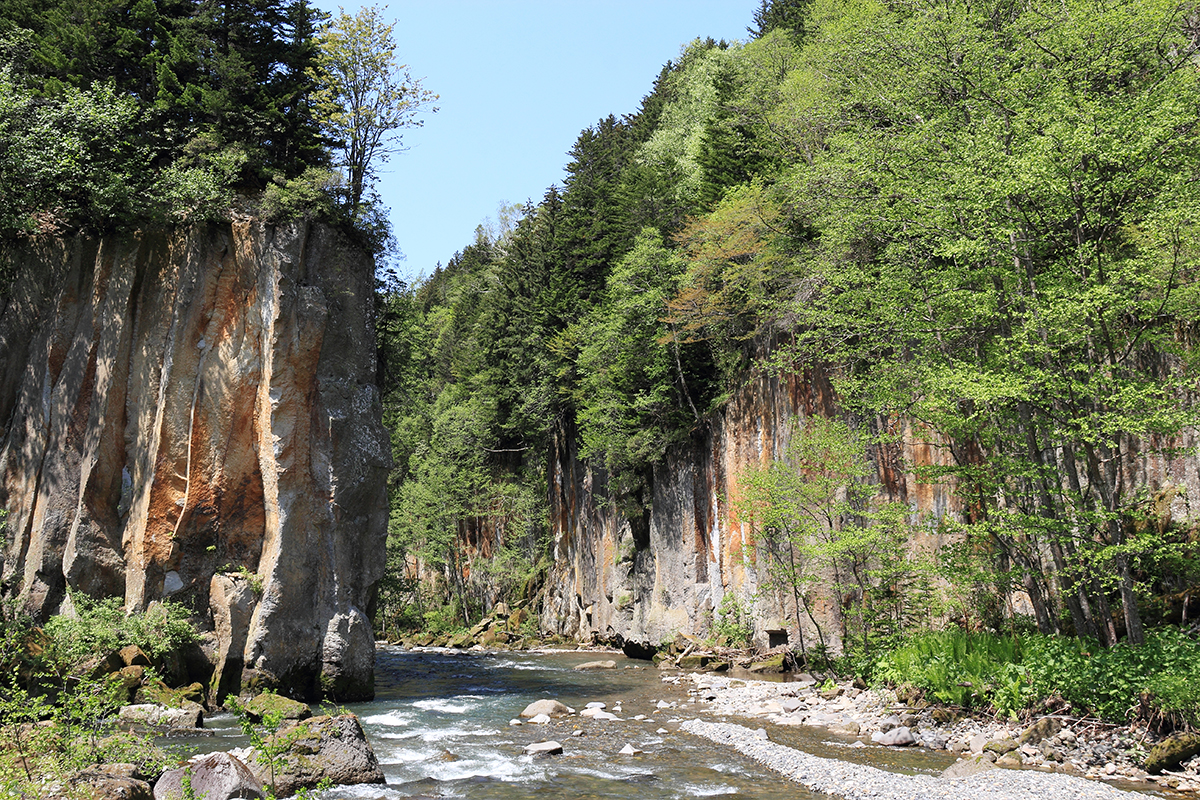
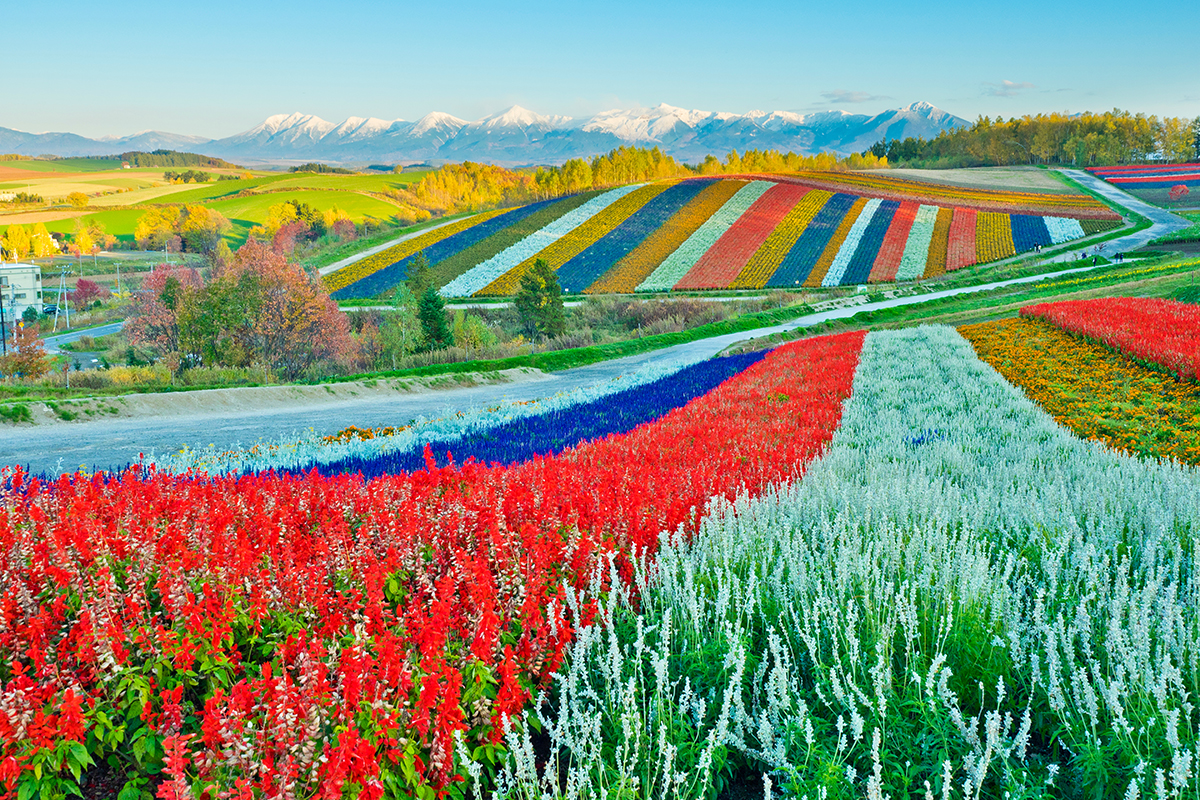
If you enjoyed reading this blog post, you sure will enjoy a trip to Asahikawa even more! You can always contact us to help you with all your Hokkaido travel needs. Click on the ’Contact Us’ button below to get started with your travel itinerary. Let’s make your trip to Asahikawa a memorable one!
